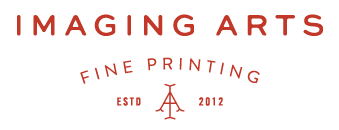ART REPRODUCTION AND GICLEE PRINTING
MAKE PRINTS FROM YOUR ORIGINAL PAINTINGS OR DRAWINGS
GICLEE PRINTING
The heart of our business is art reproduction.
Once you’ve finished an original painting or drawing you may want to make giclee prints available. Prints allow you to sell your work more than once. Also, it makes the work available to others who may not be able to afford the original painting or who come across it after the original has been sold.
Even if you decide not to make prints from your paintings it is a good idea to have a high quality photograph of your work for documentation and archiving purposes. This helps to catalog your work and give you the best image possible for use in your portfolio, website, or for passing an archive of your work on to future generations.
We make professional quality reproductions of your work that do your originals justice.
To read a more detailed explanation of the painting reproduction process click here.
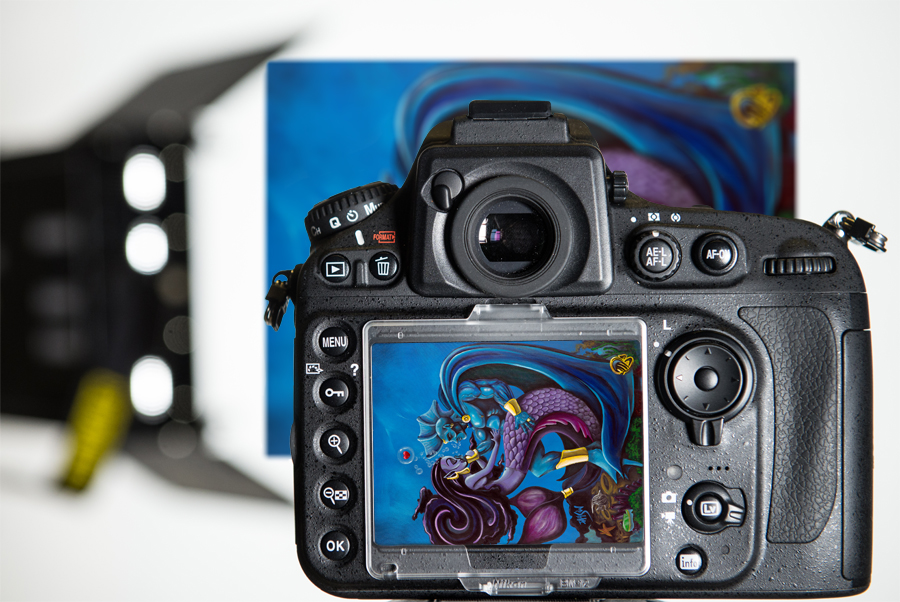
HAVE ART REPRODUCTION QUESTIONS?
HOW DOES GICLEE ART REPRODUCTION WORK?
1. DIGITIZING
First, bring your original work to our studio and drop it off. We either scan or light your work with daylight balanced professional studio lights and photograph it using a high resolution camera with a custom profile to aid in maintaining the best colors. Photography is done at a cost of $25 per photograph, which includes basic color adjusting and the digital files. If you bring us at least 10 paintings at a time we will charge you by the hour rather than by the piece. Hourly photographing will depend upon a few factors but in any case will always save you money over shooting them individually.
2. COLOR WORK
After we have photographed your work the files are then put on the computer for adjusting and color balancing.They are imported into a professional photo editing program using a custom color profile built for our camera/light combination. This stage is important for making sure the brightness, contrast, sharpness, and colors look good and are as faithful to the original as possible. It is worth noting that there will almost always be some differences between your prints and your original, that’s just how it works, but we will get you a great reproduction of your original work.
3. YOUR FILES
Finally, we create two separate files and give them both to you. These files are a high resolution jpeg file and a web resolution jpeg. The high resolution file can be used for printing of any sort and the web resolution file is already set for emailing, putting on your website, or sharing on social media. We no longer use CDs or DVDs, so you can either bring us a USB flash drive to transfer your images or we can share them with you digitally via Dropbox. All of this is included in the $25 per photograph charge or hourly rate.
OUR EQUIPMENT
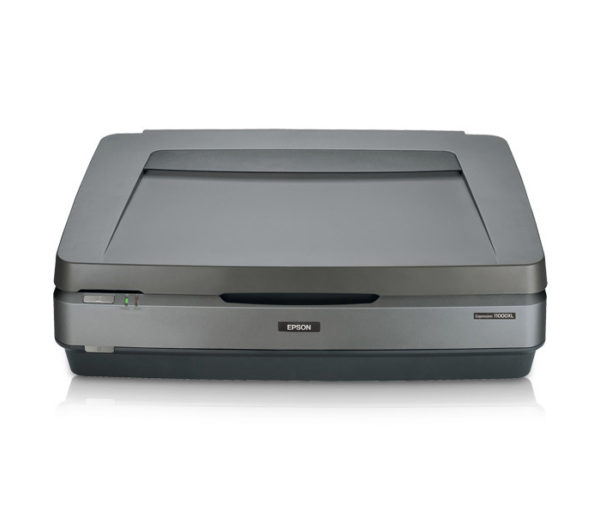
EPSON 11000XL SCANNER
The Epson Expression 11000xl photo scanner is an oversized flatbed scanner that can be used to scan artwork up to about 12×18″. The large scanner bed allows us to fit more on it at a time as well as gives us the ability to scan larger items that would otherwise have to be photographed thereby, maximizing resolution. It has the advantage of autofocus and we use it with Silverfast professional scanning software to ensure the best clarity and colors.
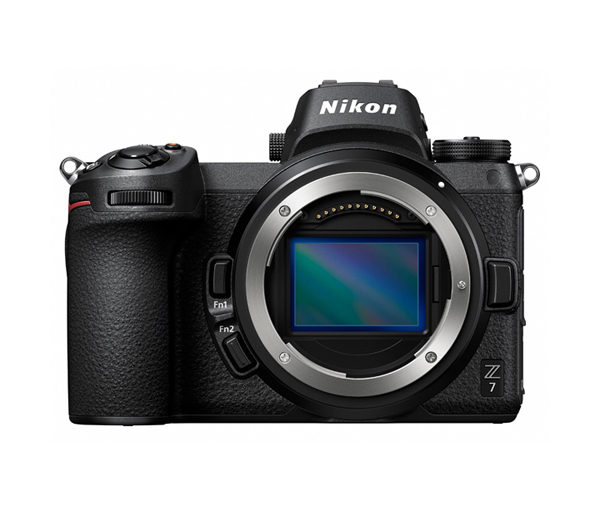
NIKON Z7 MIRRORLESS CAMERA
The Nikon Z7 is a top of the line 46 megapixel digital mirrorless camera. As a general rule we photograph any pieces larger than approximately 12×18″. The Z7 has more resolution than you are likely to truly need and does a great job with color. We pair it with a professional quality Nikkor lens and always shoot on a tripod to maximize the detail in your artwork.
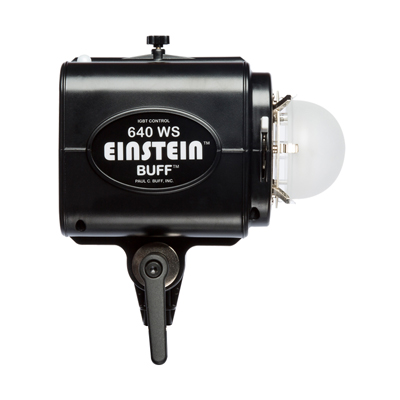
EINSTEIN STUDIO FLASH UNITS
We use Paul C. Buff Einstein flash units in our studio for painting reproduction work. Einsteins are chosen specifically for their color consistency and that is a key element of art reproduction. Many lights, even very expensive ones, can have significant color shifts from exposure to exposure, as the power of the lights is raised or lowered, or as they’re left on for a period of time. With the Einsteins we know that the color of the light is not going to have major shifts, and this means that the end result is more accurate color time and time again.
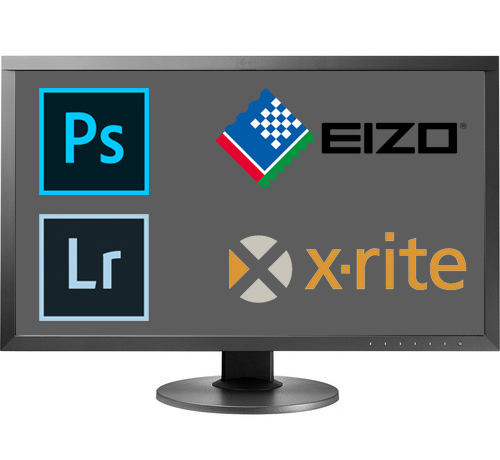
COLOR MANAGEMENT
- Monitors– We use industry leading Eizo ColorEdge monitors.
- Image Editing – We use Adobe Photoshop and Lightroom, both industry standard professional image editing programs.
- Monitor Profiling – We use X-Rite i1 equipment for proper monitor calibration.
- Camera Profiling – We use the Calibrite ColorChecker Digital SG and basICColor Input 6 Pro to build accurate custom camera profiles for art reproduction.
- Paper Profiles – We use i1 equipment to build custom profiles in house for all of our photo and fine art watercolor papers and canvas.
GICLEE PRINTING AND REPRODUCTION OPTIONS
CANVAS
Canvas (or giclee printing) is a popular choice for original painting reproduction. When you choose canvas we print your image, adjust the color, spray it with a protective coating, and hand stretch the print like a painting so it is ready to hang when you pick it up.
PHOTO PAPERS
We have two photo paper options, luster and matte finish. Luster has a slight sheen, is smooth with a very slight tooth, and does a good job with producing deep blacks, good colors, and good sharpness. Matte has no shine at all and has a smooth surface. Learn more about paper printing and see prices here.
FINE ART PAPERS
FREQUENT ART REPRODUCTION QUESTIONS
How Much Does It Cost?
Per piece: The cost to photograph is $25 per piece. This includes either photographing or scanning your painting, drawing, or other work of art (we decide which will be the best option for your work), doing basic overall brightness and color adjustments, and saving high res jpeg and web res jpeg files. We will also give you a copy of the files we create which we can put on a USB drive you bring us or we can share the files with you via a file sharing service such as Dropbox, Google Drive, etc.
If you bring us at least 10 paintings at a time then we will charge you an hourly rate of $100 per hour to photograph. Please note this does not mean the cost is $100 for 10 paintings. 10 paintings is simply the point at which we can justify the cost reduction of charging by the hour. The actual time it takes will vary depending upon several factors (for example, if you bring 15 paintings which are all the same size then that goes more quickly than 15 paintings which are all different sizes). In any case the hourly rate will always save you money over having us photograph them individually.
How Long Does It Take
Will The Reproductions Perfectly Match My Original?
We will not promise you a perfect color match. But wait! I thought you know what you’re doing!!! It is because we know what we’re doing that we will not promise you a perfect color match across the board. In short, some colors cannot be exactly reproduced and others can simply be very difficult to fine tune. The world of color we see and paint in doesn’t perfectly align with the world of color we print it. What we will do is tell you that we will give you a good file that is a reasonable match to your original. Does this mean that it will look drastically different from your original? No, definitely not! You don’t have to worry about your reds coming out blue. It means that there will simply be some variation in your prints relative to the original, that’s just part of the process. This distinction comes only when talking about a 100% exact match to every color in every way (which is generally not realistic).
What If The Files Don't Look Right On My Monitor?
It’s very important to note that unless you are viewing the files properly on a color calibrated monitor then what you see on your end is not going to be an accurate representation of the color and brightness of the files. As a general rule most monitors are way too bright and have too high of a contrast ratio. While this may make the monitor look good, it works in the opposite direction of achieving color accuracy. Furthermore, out of the box monitors are not profiled to a color standard. So, if you want to get the most accurate view of your files possible then you will need to properly calibrate your monitor, and this remains true no matte how nice or expensive your monitor is. If you have us further edit your files based on how they look on your monitor then know that you will be affecting the fidelity of the prints.
Do I Have To Leave My Work With You?
Where Do I Drop My Work Off?
Can I Photograph My Own Work And Have You Print From That?
Shorter answer: Yes, though if you insist on creating the file yourself please understand that we cannot be responsible if you are unhappy with aspects of the prints such as color, brightness, sharpness, etc. If we didn’t create the file then we have no way to know how faithful to the original it is. Proper color management is crucial to a faithful print so make sure you’ve taken the proper steps to ensure file accuracy.
Longer answer: We do not suggest doing this. There are a lot of details that go into making a faithful reproduction of a painting that you are not going to have at your disposal at home. In fact, even most professional photographers will not be set up to do this as well as possible. This isn’t a comment on their skill as a photographer, it is simply that painting reproduction requires some extra steps that wouldn’t otherwise come into play with other photography. We can certainly work with files that you’ve made, and we don’t mean to suggest that they will turn out terribly. It simply means that the file creation process is crucial to final color, and if we didn’t create the files then control of that color is largely out of our hands. If you’d like to understand more about why this is then read our article on art reproduction here.
Can I Have Someone Else With A Good Camera Photograph My Work?
Shorter answer: Yes, though if you insist on creating the file yourself please understand that we cannot be responsible if you are unhappy with aspects of the prints such as color, brightness, sharpness, etc. If we didn’t create the file then we have no way to know how faithful to the original it is. Proper color management is crucial to a faithful print so make sure you’ve taken the proper steps to ensure file accuracy.
Longer answer: We do not suggest doing this. There are a lot of details that go into making a faithful reproduction of a painting that you are not going to have at your disposal at home. In fact, even most professional photographers will not be set up to do this as well as possible. This isn’t a comment on their skill as a photographer, it is simply that painting reproduction requires some extra steps that wouldn’t otherwise come into play with other photography. We can certainly work with files that you’ve had another photographer make, and we don’t mean to suggest that they will turn out terribly. You may well be very happy with them. It simply means that the file creation process is crucial to final color, and if we didn’t create the files then control of that color is largely out of our hands. If you’d like to understand more about why this is then read our article on art reproduction here.
What Equipment Do You Use?
You can read more details about what we use above and on our about us page.
Can We Make Reproductions Not Match My Original If I Want?
Will My Reproductions Last Forever?
No! There are no prints that will last forever. While we use archival materials it is important to understand both what archival means (there’s no universal standard) and the part that you play in it (it’s a very big role). Always be cautious if someone promises you a print is going to last hundreds of years and, even if you aren’t told that, be sure you understand what is meant by being told something is archival. We offer some paper options which are archival certified and some which are not (we’re happy to discuss what that means for you). Our inks are archival inks, our canvas is archival certified, and our canvas varnish is archival. We have a post we’ve made about archival prints that we highly suggest you read. You can find that here.
